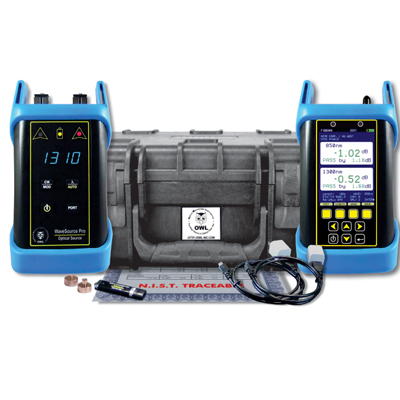Vital Functions to Look for in Optical Fiber Screening Equipment
When evaluating optical fibre testing equipment, a number of important attributes warrant cautious consideration to guarantee optimal efficiency and reliability. Compatibility with existing market criteria enhances capability, while sophisticated dimension abilities, consisting of TDR and OTDR screening, deal vital insights into network honesty. Comprehending these attributes will shed light on how to choose the best tools for your particular requirements.
Accuracy and Accuracy
Accuracy and precision are crucial specifications in the examination of optical fiber screening tools. These two attributes make certain that measurements reflect truth efficiency of fiber optic systems, which is vital for efficient network installment, upkeep, and troubleshooting. Precision describes the nearness of a determined value to the real value, while accuracy represents the repeatability of dimensions under unchanged problems.
When choosing optical fibre screening devices, it is vital to consider tools that give high accuracy and precision to minimize mistakes in information analysis. Instruments such as optical time-domain reflectometers (OTDRs) and power meters ought to have calibration systems to ensure constant performance with time. Furthermore, the specs given by makers ought to detail the equipment's dimension unpredictability, which directly affects the dependability of examination outcomes.
In addition, the efficiency of optical fiber testing equipment can be affected by environmental elements, such as temperature level and humidity. Consequently, selecting tools created to reduce these variables will improve dimension fidelity. In verdict, buying optical fiber screening tools with robust precision and precision features is essential for maintaining optimal network performance and making sure the integrity of fibre optic communications.

User-Friendly Interface
The efficiency of optical fiber testing tools is not solely figured out by its accuracy and accuracy; an user-friendly user interface plays a significant function in boosting operational effectiveness. A properly designed user interface simplifies the interaction in between the technician and the devices, permitting a more user-friendly understanding of intricate functions.
Key features of an easy to use user interface consist of clear navigating menus, rational designs, and conveniently obtainable controls. These aspects enable service technicians to execute tests swiftly without comprehensive training, minimizing the chance of user error - ofda. Visual indicators such as progress bars, alerts, and graphical representations of information can significantly boost the individual experience by supplying instant comments on the testing process.
Additionally, customizable setups can better improve operations by permitting customers to readjust specifications according to particular testing requirements. This flexibility not just conserves time yet additionally ensures that the tools satisfies diverse application needs.
Incorporating aid attributes, such as tooltips and extensive guidebooks, into the user interface can further equip users, promoting self-sufficiency and self-confidence in running the devices. Inevitably, a straightforward interface is crucial for optimizing the potential of optical fiber screening equipment, resulting in more reliable and effective testing results.
Transportability and Toughness
Portability and sturdiness are critical attributes of optical fibre screening tools, ensuring that it can stand up to the roughness of numerous environments while remaining simple to transportation. Technicians frequently function in diverse settings, from telecommunications hubs to remote setups, making it imperative that testing tools are lightweight and compact (ofda). Equipment created with transportability in mind generally features ergonomic takes care of and instances that facilitate effortless movement, thus enhancing functional effectiveness on-site
Toughness is similarly necessary, as optical fiber screening devices is typically subjected to severe conditions, including temperature level variations, wetness, and physical impacts. Tools click for info constructed with tough materials such as enhanced plastics or steel real estates are much better fit for these settings, decreasing the danger of damage during usage and transport. Furthermore, devices with water and dust resistance rankings, such as IP rankings, makes sure reliable efficiency in difficult conditions.
Compatibility With Standards
Ensuring compatibility with industry criteria is important for optical fibre screening devices, as it straight affects the reliability and legitimacy of test outcomes. Optical fiber networks are subject to rigorous efficiency criteria developed by various companies, including the Telecoms Market Association (TIA) and the International Electrotechnical Commission (IEC) Checking equipment has to adhere to these criteria to guarantee that dimensions are constant and comparable across different systems and atmospheres.
When choosing optical fibre testing devices, users must validate that the tool fulfills appropriate criteria significant to their particular application, such as those pertaining to attenuation, data transfer, and crosstalk. Equipment that is compliant with well-known standards not only aids in achieving precise outcomes but likewise promotes interoperability among gadgets from various suppliers.
Additionally, compatibility with criteria ensures that the tools can be made use of in regulatory conformity situations, which is important for projects in industries such as telecoms, aerospace, and armed forces applications. As a result, investing in optical fibre screening tools that straightens with existing industry requirements is a basic aspect of preserving high quality assurance and achieving ideal network performance.
Advanced Measurement Abilities
Advanced measurement capabilities are a defining function of contemporary optical fibre screening equipment, permitting for extensive evaluation of network performance. These capacities make sure that technicians can evaluate important specifications such as signal loss, dispersion, and data transfer, which are vital for keeping optimal interaction performance.
One key aspect is the capacity to conduct time-domain reflectometry (TDR) and optical time-domain reflectometry (OTDR) tests. These techniques make it possible for users to determine faults, gauge the size of fibers, and establish the location of problems with remarkable precision - ofda. Advanced devices typically consists of the ability to gauge optical power degrees, helping to evaluate the general health and wellness of the network and ensure conformity with the required specifications.
In addition, some screening devices use innovative algorithms for real-time evaluation, enabling quicker medical diagnosis and troubleshooting. This is especially essential in anchor high-speed networks where downtime can Recommended Reading result in considerable monetary losses. With the integration of innovative software interfaces, users can picture data better, helping with notified decision-making. Finally, buying optical fiber testing equipment with advanced measurement capabilities is essential for guaranteeing network reliability and efficiency in today's demanding telecommunications landscape.
Conclusion
